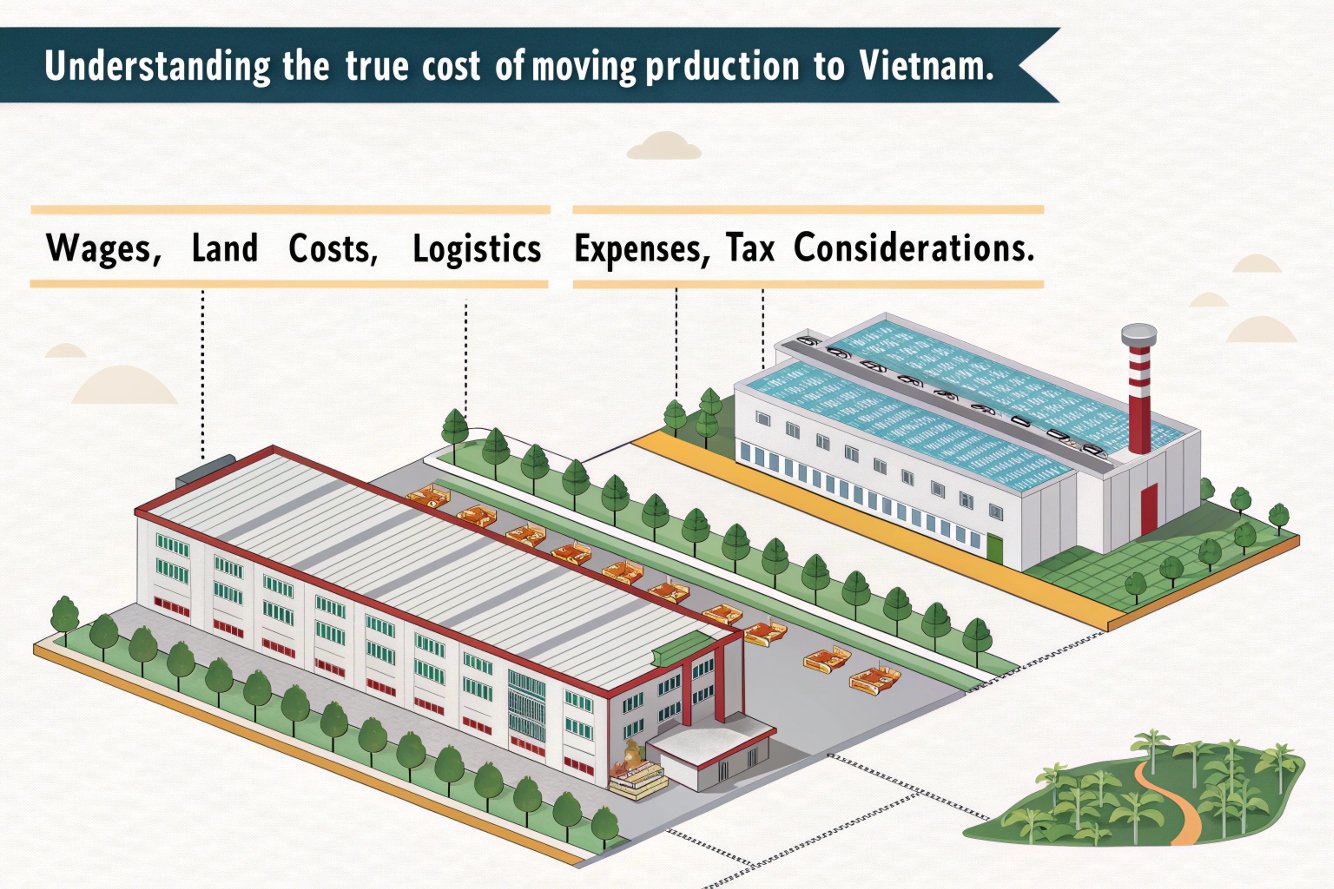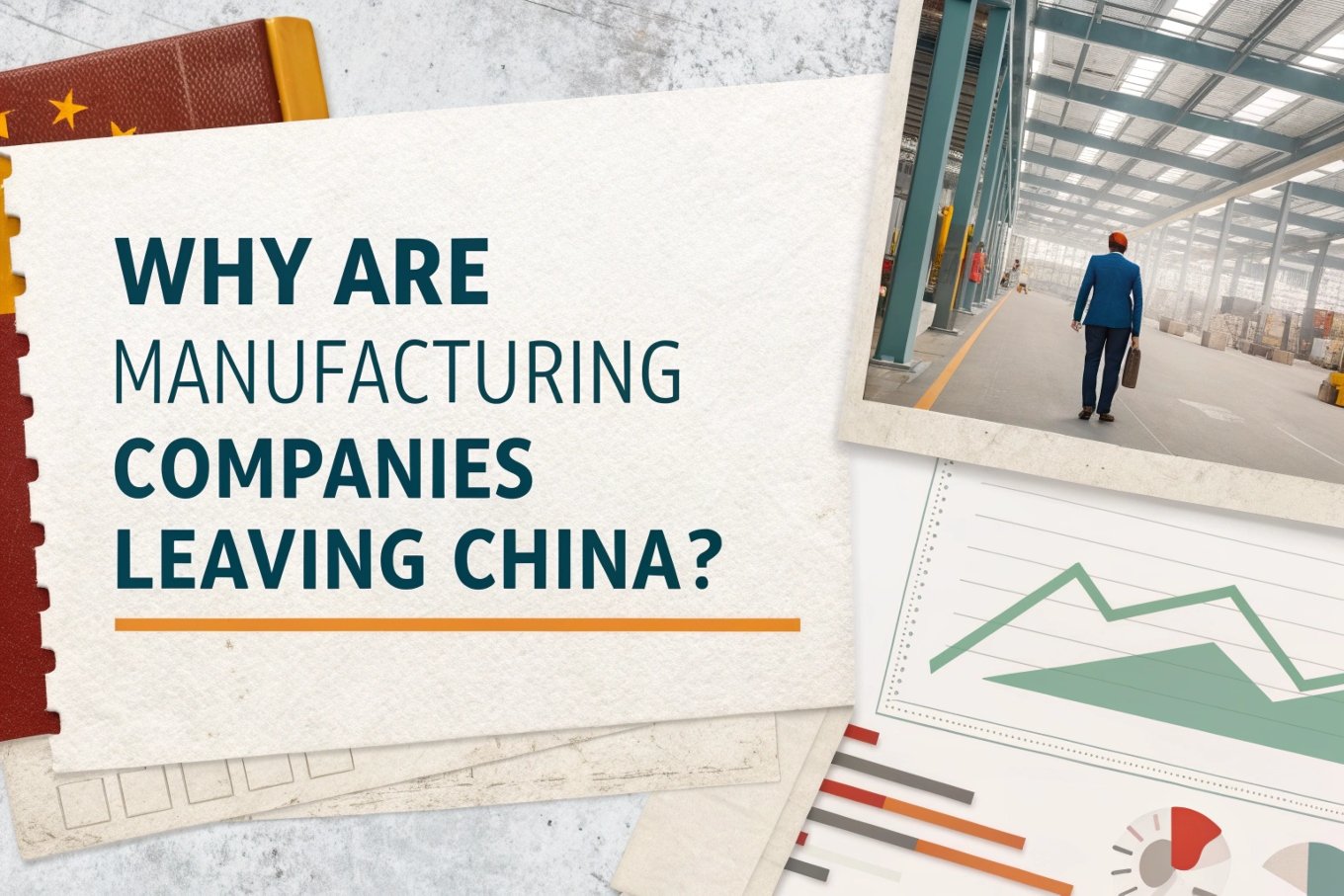
Over the past few years, I’ve worked with many businesses considering moving production from China to Vietnam. They often ask me about the real cost differences—beyond just avoiding tariffs. While Vietnam offers lower labor and land costs, companies also need to evaluate logistics, supply chain adjustments, and potential tax implications before making the move.
Shifting production to Vietnam offers potential cost savings in labor, land, and logistics, though it introduces new challenges like higher taxes and supply chain complexity. Companies must weigh these costs carefully to determine if the transition makes sense for their business.
Let’s take a deeper look at how each element of the cost structure—labor, land, logistics, and taxes—could change when moving manufacturing from China to Vietnam.
Why are companies moving their purchasing out of China to Vietnam?
Several factors are driving companies to explore Vietnam as an alternative to China for purchasing and manufacturing. While China has long been the global leader in production, geopolitical tensions, rising costs, and shifting trade policies have made Vietnam an increasingly attractive option.
Companies are moving their purchasing out of China to Vietnam primarily to mitigate rising labor costs, avoid tariffs, and diversify their supply chains. Vietnam offers competitive advantages like lower wages and favorable trade agreements1.

Reasons Behind the Shift to Vietnam
| Factor | Impact on Businesses |
|---|---|
| Rising Labor Costs | China’s wages have been rising steadily, making Vietnam’s lower labor costs more attractive. |
| Tariffs and Trade Wars | The US-China trade war led to high tariffs on Chinese goods, making Vietnam a cost-effective alternative. |
| Supply Chain Diversification | Companies are seeking to reduce reliance on China due to geopolitical uncertainties and the need for resilient supply chains. |
| Free Trade Agreements | Vietnam’s participation in various FTAs (CPTPP, RCEP) allows businesses to access low-tariff markets. |
Impact on Cost Structure
- Labor Costs – In Vietnam, labor costs are approximately 40-50% lower than in China, which is a significant advantage for labor-intensive industries.
- Production Flexibility – Vietnam has become more attractive for industries like textiles, electronics, and consumer goods, which require flexibility in production.
- Supply Chain Security – By diversifying their production base, companies can secure a more stable supply chain in the face of political and economic risks in China.
As companies shift to Vietnam, the potential for cost savings in labor, as well as access to favorable trade agreements, make it an attractive choice.
Why are manufacturing companies moving out of China?
The movement of manufacturing companies out of China is driven by several factors, both economic and geopolitical. While China remains a major player in global manufacturing, businesses are increasingly seeking alternatives to reduce costs, navigate regulatory changes, and diversify their supply chains.
Manufacturing companies are moving out of China due to rising costs, trade uncertainties, and a desire for more stable, diversified supply chains. Vietnam presents a compelling alternative with lower labor costs2 and a favorable business climate.

Key Reasons for the Shift
| Factor | Impact on Manufacturers |
|---|---|
| Rising Labor Costs3 | China’s wages are rising faster than productivity, leading companies to seek cheaper alternatives. |
| Geopolitical Tensions | US-China trade war, tariffs, and regulatory uncertainty have made businesses look for new manufacturing bases. |
| Supply Chain Diversification4 | Companies want to spread risk across multiple countries to avoid reliance on China for production. |
| Automation & Technology5 | Increased automation in China has reduced the country’s cost advantage for low-wage, manual labor industries. |
Changes in Cost Structure
- Labor Costs – Vietnam offers much lower wages than China, reducing overall production costs, especially for labor-intensive industries.
- Land Costs – The cost of land for manufacturing in Vietnam is lower compared to China, particularly in industrial zones located outside major urban areas.
- Logistics and Transportation Costs – While China has world-class infrastructure, Vietnam is improving its logistics network, though some regions are still catching up. Companies may face initial challenges in securing reliable transportation options, especially for long-distance shipments.
As Vietnam’s manufacturing capabilities continue to develop, it will become an even more attractive option for companies looking to diversify their production bases and lower costs.
Conclusion
Shifting production from China to Vietnam can result in significant changes in the cost structure. Labor, land, and logistics are generally more cost-effective in Vietnam, but companies may face higher taxes and regulatory complexity. Understanding these factors in depth is crucial to making the right decision when moving manufacturing operations. By carefully considering labor costs, land availability, logistics, and tax implications, businesses can optimize their production strategy for both cost savings and long-term stability.
Discover the various trade agreements Vietnam has that can enhance business opportunities and reduce costs for companies. ↩
Exploring this link will provide insights into how lower labor costs in Vietnam can significantly benefit companies looking to optimize expenses. ↩
Understanding the impact of rising labor costs can help businesses strategize their manufacturing locations effectively. ↩
Exploring supply chain diversification can reveal strategies to mitigate risks and enhance operational resilience. ↩
Learning about automation’s impact on manufacturing costs can guide companies in making informed decisions about their production strategies. ↩

